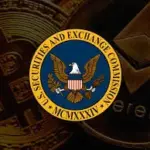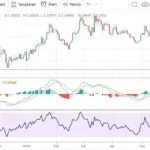The regulatory environment for cryptocurrencies continues to evolve rapidly in 2025. Governments and regulators worldwide are balancing two competing goals: encouraging innovation and protecting investors (and financial systems) from risks like fraud, money laundering, market manipulation, and systemic instability. Here are the most important developments and implications this year.
Key Regulatory Developments in 2025
- U.S.: Stablecoin Regulation & Strategic Moves
- The U.S. Senate passed the GENIUS Act in mid-2025, establishing federal framework for stablecoins. Key requirements include backing stablecoins with liquid assets (e.g. USD or U.S. Treasuries) and mandating monthly disclosure of reserve compositions. (Reuters)
- The White House also issued Executive Order 14178, “Strengthening American Leadership in Digital Financial Technology,” which among other things prohibits the establishment or promotion of a U.S. central bank digital currency (CBDC) and sets up a working group to propose a federal regulatory framework for digital assets. (Wikipedia)
- There is also a proposal for a Strategic Bitcoin / Digital Asset Reserve in the U.S.—part of making the country more crypto-friendly while setting some guardrails. (Wikipedia)
- European Union: MiCA & Stablecoin / Oversight Enhancements
- The EU’s Markets in Crypto-Assets Regulation (MiCA) is being implemented, bringing comprehensive regulations for various types of crypto assets and service providers across member states. This includes oversight of stablecoins, utility tokens, asset-referenced tokens, and more. Regulators are also discussing expanding oversight (for example via ESMA) over exchanges and crypto firms to ensure unified supervision. (ft.com)
- There is increasing attention on stablecoins in the EU, particularly stablecoin issuance in euros, how stablecoin regulation can be improved, and how to strike a balance between innovation and financial security. (Reuters)
- UK: Proposed Limits & Stronger Controls
- The Bank of England is proposing limits on how much stablecoins individuals and businesses can hold (e.g. caps like £10,000-£20,000 for individuals), citing financial stability risks and concerns about stablecoins acting like bank deposits or substituting for banking system money. (ft.com)
- Malaysia and Southeast Asia: Evolving Crypto Frameworks
- In Malaysia, cryptocurrencies are still not legal tender, but are classified as securities under the Prescription Order 2019. The Securities Commission (SC) has the regulatory authority over offerings, trading, and exchanges of digital tokens. (AInvest)
- Malaysia has amended its definitions and laws (e.g. the Digital Token Order) to better cover what tokens are allowed, how they are governed, and how exchanges must operate. Also, new proposals aim to streamline digital asset exchange (DAX) rules: making it faster for assets to be listed, imposing stricter governance and client asset segregation, stronger financial requirements for exchange operators. (Blockhead)
- There’s also work in Malaysia on tokenized capital market products (digital twin tokens, etc.), separating them from purely “natively digital” assets, to ensure existing securities laws apply but also add blockchain-specific safeguards. (JuCoin)
- Global/Other Trends: AML, Privacy, Tokenization, Real-World Assets
- Many countries are tightening anti-money laundering (AML) and know-your-customer (KYC) rules for crypto service providers—wallets, exchanges, token issuers.
- Privacy / anonymity in crypto is under scrutiny. Regulations are being shaped to restrict or regulate “privacy coins” or anonymous accounts especially in jurisdictions concerned about illicit finance.
- Tokenization of real-world assets is getting formal regulatory attention: securities tokenization, infrastructure for RWAs (real world assets), and clarifying how digital and conventional record keeping must reconcile.
- Regulators are also focusing on transparency (reserve disclosures, audit, financial resilience) especially for stablecoins.
What These Mean for Investors
Here are the implications and things crypto investors should keep in mind in 2025:
| Aspect | Why It Matters | What You Should Do |
|---|---|---|
| Classification of Assets | Whether a token is considered a security, commodity, or utility token matters for what rules apply. Misclassification risk can lead to legal or tax issues. | Before investing, check how your jurisdiction classifies digital assets. Be especially careful with new tokens: read whitepapers, regulatory disclosures, and whether the asset is registered/licensed. |
| Stablecoin Risk & Regulation | Stablecoins may become more strictly regulated: reserve backing, disclosure, reserve audits. Some holders may face limits on holdings. Also, stablecoins tied to or issued in a regulated jurisdiction may be safer. | If you hold stablecoins, check if they comply with your country’s probable upcoming rules. Diversify stablecoins if possible and prefer ones with good transparency. |
| Exchanges / Token Listings | Exchange operators are under pressure to have strong governance, segregate customer assets, follow financial health requirements. Some tokens may become harder to list if they don’t meet criteria. | Use regulated exchanges where possible. Be cautious trading obscure tokens on platforms without strong oversight. Ensure the exchange meets the regulatory standard in your country. |
| Tax & Reporting | Crypto income, frequent trading, mining, staking, and token events (airdrops, etc.) are under increasing tax and reporting scrutiny. What was untaxed or lightly regulated in some places may become taxable. | Keep good records of transactions. Understand whether gains are capital or business or personal income in your jurisdiction. Consult tax professionals if needed. |
| Legal & Compliance Risks | Because regulation is still evolving, there’s legal risk for investors: e.g. asset bans, token delisting, law changes. Projects may become non-compliant. | Monitor regulatory developments. Don’t assume current permissibility will remain. Follow news, regulator announcements. If investing in emerging tokens/projects, check whether there are ongoing regulatory risks. |
| Innovation vs. Safety Trade-off | Regulations may slow innovation in some areas (e.g. privacy features) but also make the sector safer. Regions with clearer rules tend to attract more institutional money. | Balanced exposure: consider exposure to regulated markets/projects as well as more speculative ones (if you accept risk). Just ensure you understand the trade-offs. |
Risks & Uncertainties
- Regulatory Divergence: Rules vary widely between jurisdictions. What’s allowed in one country (or even one state/province) might be banned in another.
- Retroactive Enforcement: Regulators might apply new interpretations to previously unregulated activity. Investors in projects that thought they were compliant could face enforcement or cleanup.
- Political Shifts: Changes in government can cause rapid changes in policy (for example, the U.S. under different administrations, or in countries where leadership is less stable).
- Technology Outpacing Regulation: Innovations (DeFi, cross-chain protocols, privacy tools) may outstrip what laws anticipate, which can result in legal grey areas or crack downs.
- Market Sentiment Reaction: Regulatory news tends to trigger strong price moves (both positive and negative). Uncertainty can lead to heightened volatility.
What Investors Should Watch in the Near Term
- New Stablecoin Legislation globally (not just in the U.S. and EU). Rules about reserves, audits, disclosure.
- Regulation of tokenized securities / RWAs — how jurisdictions define and oversee them.
- Implementation of existing laws (MiCA in EU, Malaysia’s proposals, U.S. regulatory agencies’ definitions etc.) — not just what’s written, but how strictly enforced.
- Privacy / anonymity coin rules and AML/KYC enforcement strength.
- Exchange regulations & licenses — changes in licensing, capital requirements, asset listing criteria.
- Tax regimes for crypto transactions — gains, losses, income, cross-border implications.
Conclusion
2025 is a pivotal year for crypto regulation. Many jurisdictions are moving from loosely defined rules to more detailed, enforceable frameworks. For investors, that means more clarity and potentially safer markets—but also more responsibility, compliance risk, and fewer “grey areas.”
To stay ahead, it’s wise to use regulated platforms, keep up with laws in your country, maintain transparent records, and be cautious about newer/less established tokens. With the right approach, regulatory developments can actually offer stability and long-term opportunity, rather than just restrictions.














